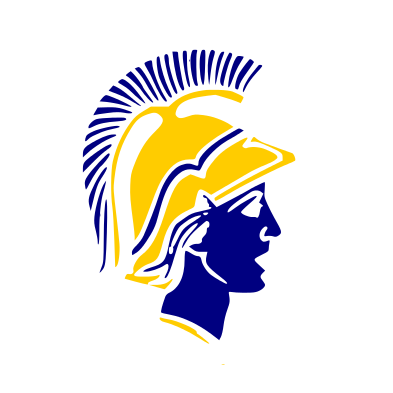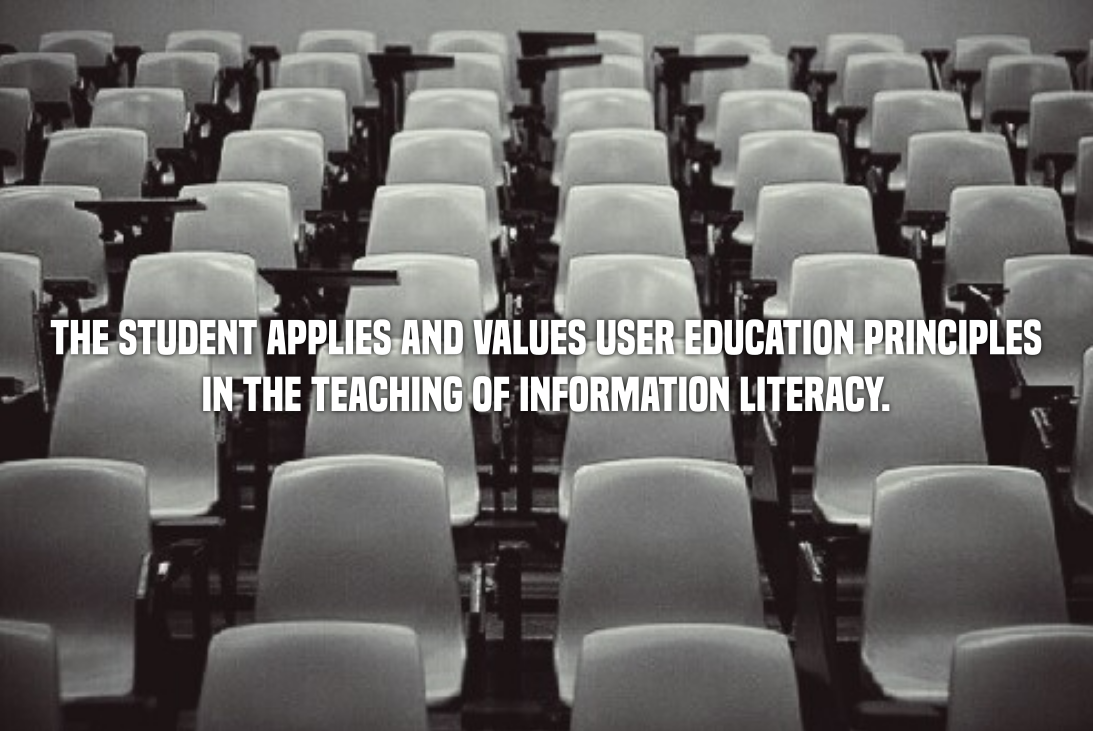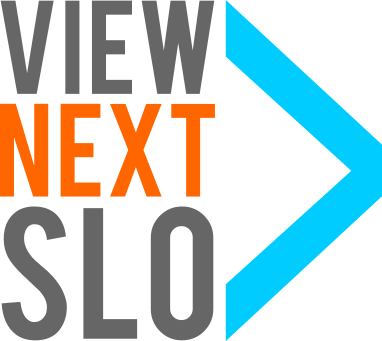Table of Contents
Student Learning Outcome Three
Reflection
The third Student Learning Outcome asks us to consider user education from the perspective of the student as well as the teacher. A unique portion of the program, this is something that many entering the field of Library and Information Studies may not have considered as part of their job duties – either on a daily level or even career level. A student may think of “user education principles” as only being relevant to the formal classroom, rather than the kind of education that can happen from across the reference desk.
I approached this Outcome by first reflecting on the foundations of what we now know as information literacy. At the American Library Association's 1881 conference, Otis Hall Robinson established a call for action in creating clarity on what the term “information literacy” truly meant. His demands contained the following three points:
1. Students need to “develop the art of discrimination” to be able to judge the value of books to develop critical judgment;
2. Students need to become independent learners - to teach themselves;
3. Students need to continue to read and study - to become lifelong learners.
(Tucker, 1979) 1)
By exploring this SLO with Robinson's points in mind, we can consider librarianship in a number of ways:
First, by examining the role of Librarian as Information Seeker. When we interact with patrons, researchers, and community members, we are hopefully working towards two things – in the short term, we are assisting them with their queries; in the long term, we are setting them up for a lifetime of independent information seeking. This is the foundation of information literacy, and it is through examining user education principles that we can better understand our users, and therefore help them find their way towards a stronger understanding of information seeking.
Next, by examining the role of Librarian as Teacher. As with the role of Librarian as Information Seeker, the task here is to help others learn how to best navigate the massive quantities of information that exist. In this role, however, the lesson is done not from behind the reference desk – it is instead done in the classroom. It is this role that some who enter the library profession may not consider as part of their library career (and may, in fact, never interact with).
When I encountered methods of user education from the perspective of how librarians can be teachers, it was most strongly advocated for in LIS672, Instructional Design. It was in this class that I was introduced to early education theory and the premises of how much work must be put into thinking about how to teach as well as what to teach. In my experience as a student, I had always assumed that more focus was put on the content of a lesson – after completing LIS672, I learned that at least as much effort – and if not more – was put on how the lesson was presented than on what the lesson was actually on.
Content from this class helped me better understand methods of communication with those who I will be working with as a librarian, not just in a space of teaching information literacy, but also in assisting patrons with reference questions, guiding peers through office training and development, and my own personal fulfillment as an information professional.
I found myself equipped with several tools after completing this course. The first was a greater sense of confidence in being able to stand before a classroom (although for my program's purposes, the classroom was virtual and I was rarely standing) and engage with my fellow learners. The second was a deeper understanding of the needs of those who are seeking education – needs for information, needs for clarity, and needs for connection with their educator. While I originally took this class with the idea that it would better prepare me for the time I might spend as a teaching librarian, its closure has instead shown me that I am now better prepared for all forms of librarianship that will come my way.
Exemplars
eResource Learning Center
The first project I have chosen to represent this Student Learning Outcome is one from LIS672, Instructional Design. It is a culmination project, one which is built of many smaller pieces. On its own, it is a website designed for information professionals and meant to serve as a showcase of different digital tools that educators can use in their own information literacy efforts. I have condensed the pages of that website into a slideshow to make them viewable on a single screen. You can view the eLearning Resources center here.
What is IDEA?

As part of the very first course taken in this program, LIS600 Foundations of Library and Information Science, students are asked to reflect on the acronym iDEA – meant to capture the core of librarianship, it stands for information, diversity, engagement, and access. This series of four blog posts show what that foundation can look like, and helps provide direction for librarians as they navigate user-education principles in spreading the basics of information literacy.
Explore the individual blog posts with the links below:




